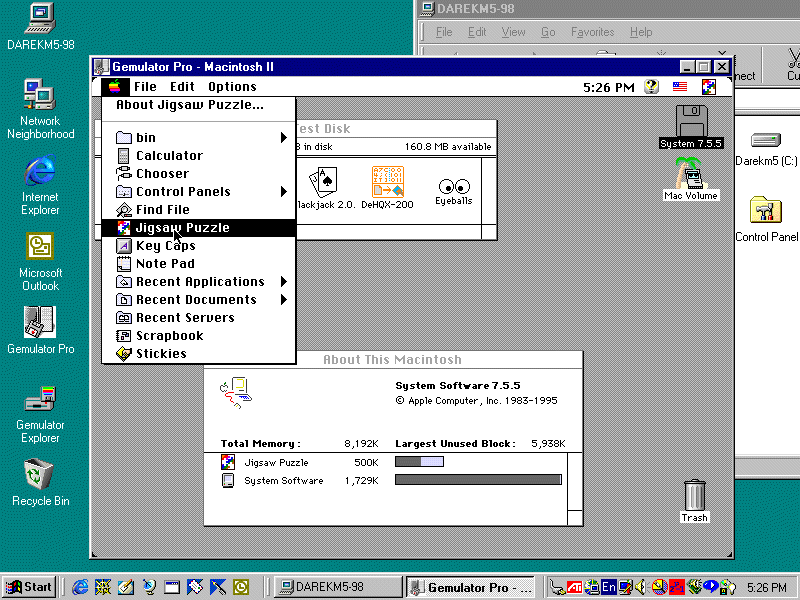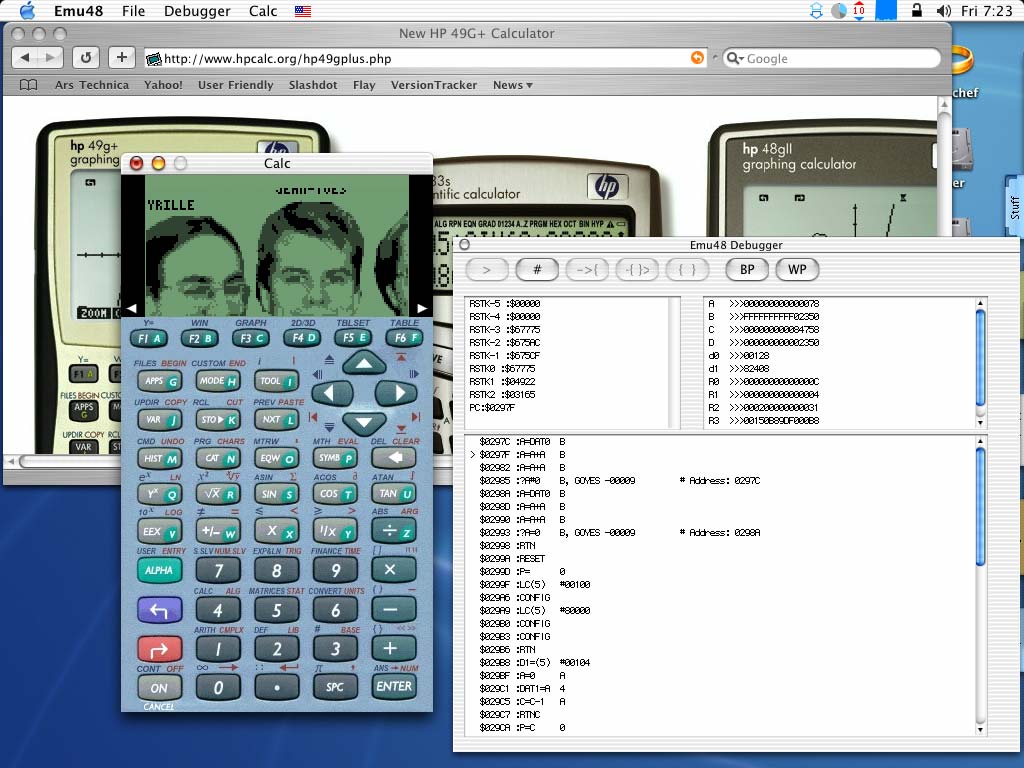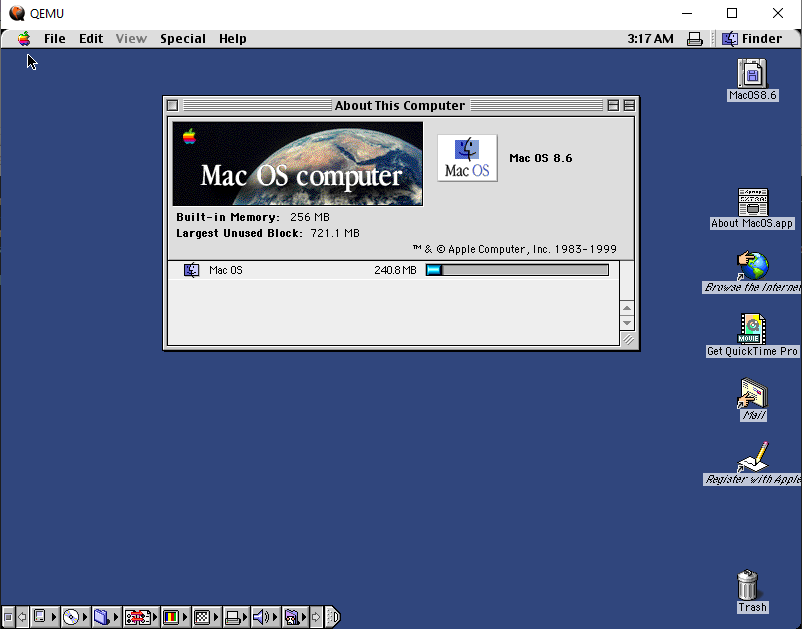
#MAC OS 8.6 EMULATOR MAC#
Mac emulation is one arena when having a non-Intel processor may be an advantage rather than a handicap.ĭesign-conscious Apple engineers picked Motorola’s 16/0 processor for the original Mac and Lisa systems, dismissing Intel’s already creaky x86 and abandoning the eight bit 6502 in earlier Apples. Linux started out as a cure for the misfeatures of IBM and Microsoft, but it runs on more than just Intel systems, and Linux Format is as much for Motorola, Alpha and other processor devotees as it is for those looking to redeem the x86 architecture. This article explains the basics, particularly where emulated Macs differ from Linux or real Mac conventions. More than any computers, before or since, the Mac is designed as a system, where the hardware plays a relatively minor part, and applications work together, co-operatively rather than competitively.Īs with any complex product developed over decades, there are a few things you need to know to use a Mac, and not all are obvious at first, even if you’ve grown up with other WIMP environments. You need to use a Mac, or a good emulator, to realise that the elegance is more than superficial.
#MAC OS 8.6 EMULATOR WINDOWS#
Macintosh concepts have so influenced Windows and Linux, and vice versa, over the last 18 years, that it’s no longer obvious what’s special about the Mac system. Gnome, KDE, BeOS, Win32 and NextStep systems all have more in common with the Mac design than they do with previous computers, with the honourable exception of the stillborn Xerox Star and Apple Lisa systems. The Mac team’s effort and influence pervades modern computers, to the point where it’s hard to see how another jump so great could be made. His staff selection criteria were eccentric, favouring left-handed acid-droppers, but they learnt from the hard work of the premature Lisa project, and bust their guts in a bid to change the world which few revolutionaries have matched. Xerox came up with the WIMP concepts - Windows, Icons, Mice and Pointers - at their California PARC research centre in the late 1970s, but failed to make a commercial success of them.Īpple founder Steve Jobs picked up on these ideas and put together a team to build an ‘insanely great’ computer. The usability of modern desktop computers owes more to Xerox, and their followers at Apple, than it does to Unix or Microsoft.

The one with its foot in two camps is Basilisk II, which can run Classic as well as Mac II systems and software. There are five Macintosh emulators for Linux: two for the contemporary PowerMac range, two which run original ‘Classic Mac’ software, and two that emulate the intervening Mac II products. The good news is that Linux systems can emulate Macs - running that system and the applications that go with it - and Macs can run Linux. It’s worth trying a Mac emulator just to see the subtle but important edge ‘conceptual integrity’ can give, and how shallow the learning curve for new packages can be. A Mac is an appliance - a tool for work, or play - rather than the time-waster Windows or Unix systems can become, with their endless demands for tweaks and housekeeping. This makes a Mac a disappointment for someone who actually likes tweaking configurations, but a boon for those who have a job to do and see the computer as a means to an end, rather than an end in itself. This makes them relatively simple, small, consistent and capable.

#MAC OS 8.6 EMULATOR CODE#
Rather than the toolkit chaos of Linux, with GTk, KDE, Motif and dozens of window managers offering more options than anyone can grasp, Mac applications build on one elegant toolbox of shared code and concepts, preloaded in ROM. The surprising thing is how little you need to learn in order to use a Mac, and how soon you find yourself discovering and using new things by experiment, rather than scouring MAN pages or online HTML. Uniquely among computer designs, the Macintosh ‘Operating System’ deserves that title. This is partly because the Mac excels in publishing and print applications, but it also stems from the strengths of MacOS itself. Uniquely among computer designs, the Macintosh ‘Operating System’ deserves that title.Notwithstanding our enthusiasm for Linux, and the number of Windows systems heating other Future offices, Linux Format magazine and dozens more is designed and laid out on Apple Macintosh systems. Notwithstanding our enthusiasm for Linux, and the number of Windows systems heating other Future offices, Linux Format magazine and dozens more is designed and laid out on Apple Macintosh systems.

Goodwin emulates three generations of ‘insanely great’ Macs.


 0 kommentar(er)
0 kommentar(er)
